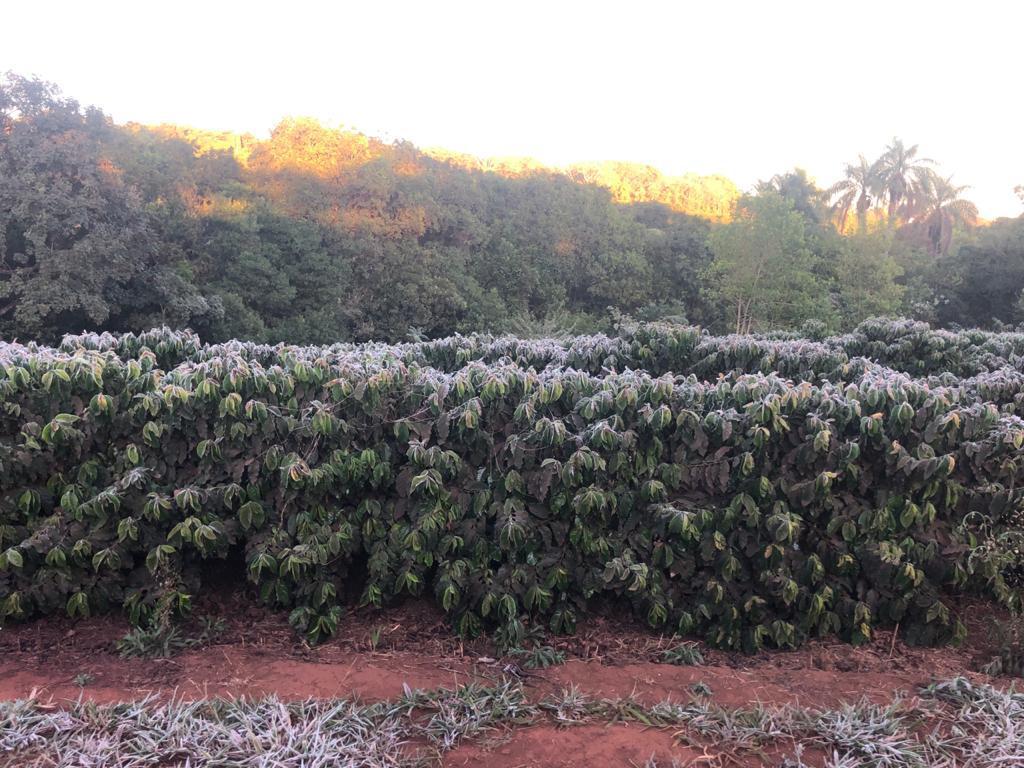
Frost on mature coffee plants in the city of Cristais Paulista, São Paulo. Photo courtesy of Jonas Ferraresso.
[Editor’s note: Beginning two weeks ago, approximately three nights of frost touched farmlands in Southeastern Brazil, affecting corn, sugarcane, potato and other important food and cash crops.
Frost also touched several key coffee-growing regions — in parts of the states of Minas Gerais, São Paulo, and Paraná — compounding troubles for many producers who were already negatively affected by sustained high temperatures in 2020 and drought conditions earlier this year.
While exact losses to Brazilian coffee production as a direct result of frost exposure may not be known for months, some producers have shared photos of coffee plants with leaves turned brown and black from exposure to freezing temperatures. Reuters recently contacted several Brazilian coffee brokers who were each assessing the damage that one exporting company described as “not negligible.”
What follows is an account of the situation in Brazil, as written by Brazilian agronomist and coffee expert Jonas Ferraresso.]
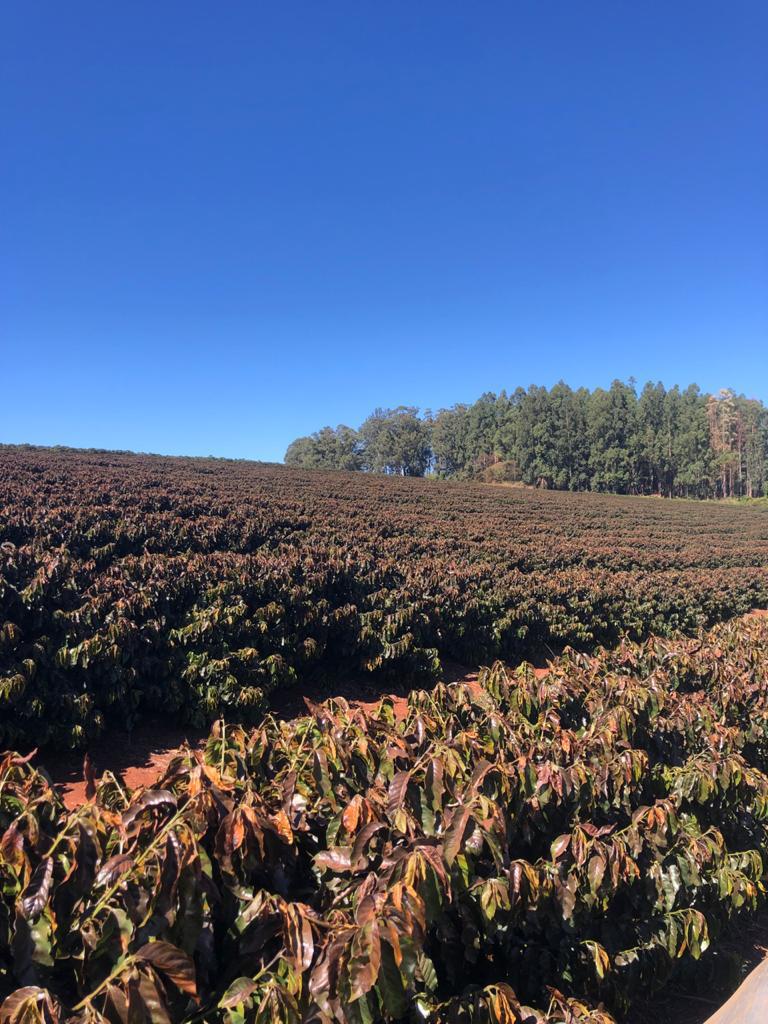
Rows of coffee trees with brown leaves in the city of Cristais Paulista, São Paulo. Photo courtesy of Jonas Ferraresso.
Frost Hits Brazilian Crops
This climatic phenomenon was already one of the great villains of Brazilian coffee-growing for almost a century, causing problems two dozen times, and with devastating losses in the years 1902, 1918, 1975, and 1994.
In 1975, the cold practically eradicated coffee in the state of Paraná, at the time one of the largest coffee producers in the country. Frosts in their most severe level are known as “Black Frost” because the temperatures are so low that they freeze the leaves, branches, roots, and sap of the plants. Although Coffea Arabica withstands low temperatures, it does not have as efficient protection mechanisms as pine trees.
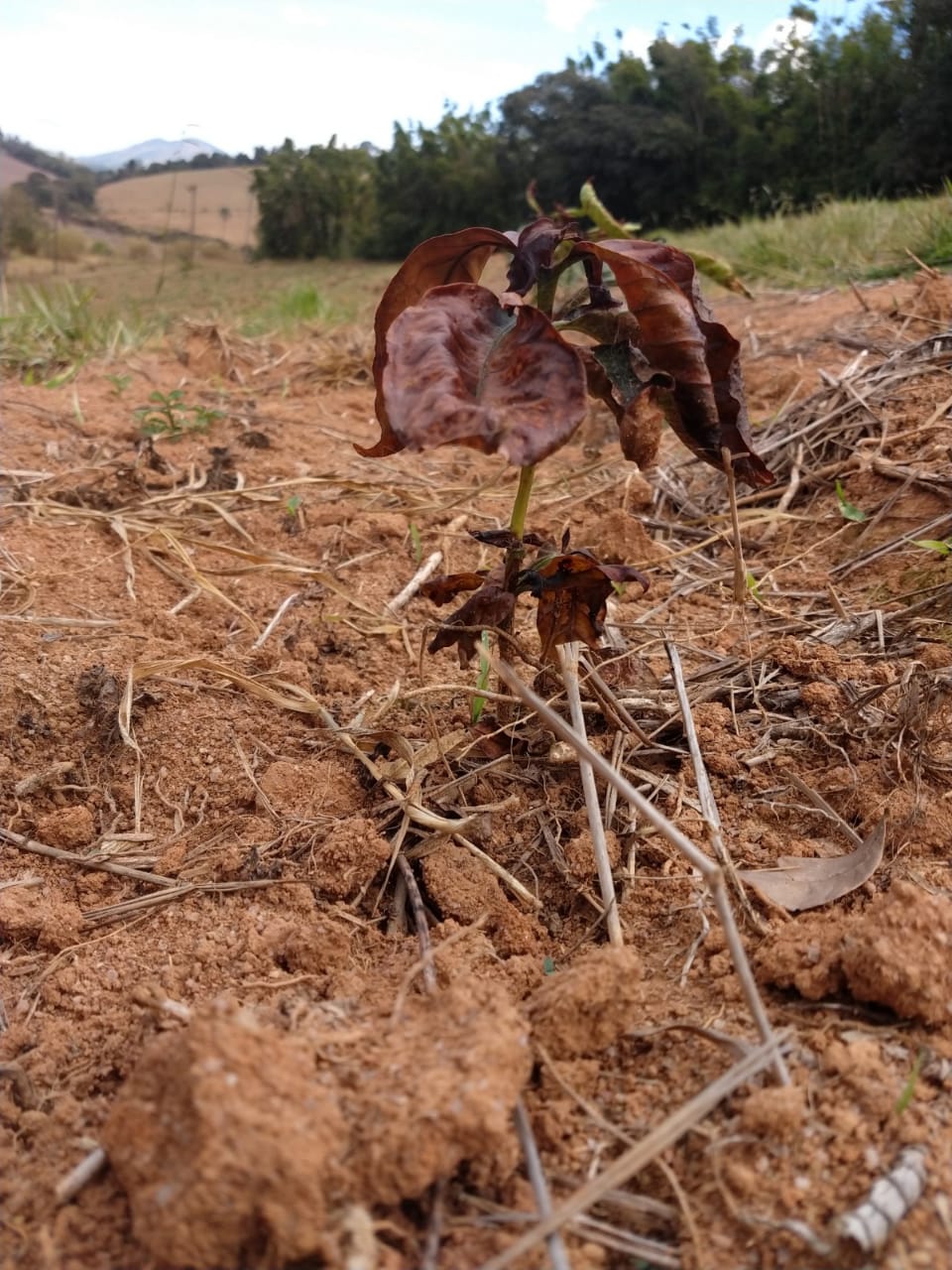
A young coffee plant turned brown by frost in Bragança, São Paulo. Photo courtesy of Adriano Grasson.
Currently, Brazilian coffee growing is distributed in several regions of the country and mostly in areas with less risk of frost, but impacts of the order of only 10% would affect 221,691 hectares, three times the footprint of New York City.
Impacts on growing areas
On the morning of July 1, 2021, a huge number of reports from producers, agronomists, and technicians flowed through the internet, and social networks and news channels across the country filled with pictures.
In the state of Minas Gerais, the most affected cities are located in the south of the state. They include Ibiraci, Três Pontas, Monte Santo de Minas, Três Corações and others.
In São Paulo, a large part of the eastern region of the state known as Mogiana — including Franca, the largest coffee producing hub in the state — had affected crops.
In the state of Paraná, frost reached almost 100% of the area, but according to Cocamar, one of the most important cooperatives in the state, only 10% of the crops were severely affected. In Carlópolis, the main producing city in Paraná, some coffee plantations were left with burned leaves and a lot of ice on the ground.
Assessing the Damage
The damage caused by the most recent event is still difficult to measure. The first visible indication of damage, one that has been widely observed, is burnt leaves and their subsequent fall. Within the next 15 to 20 days, it may be possible to observe whether plants have died or been severely damaged.
Younger crops less than four years old are generally more affected by the cold, as their thinner branches, roots, and trunks are more vulnerable. Another factor is that younger plants have a less dense canopy, which favors the entry of cold air and reduces heat storage the night before the frost.
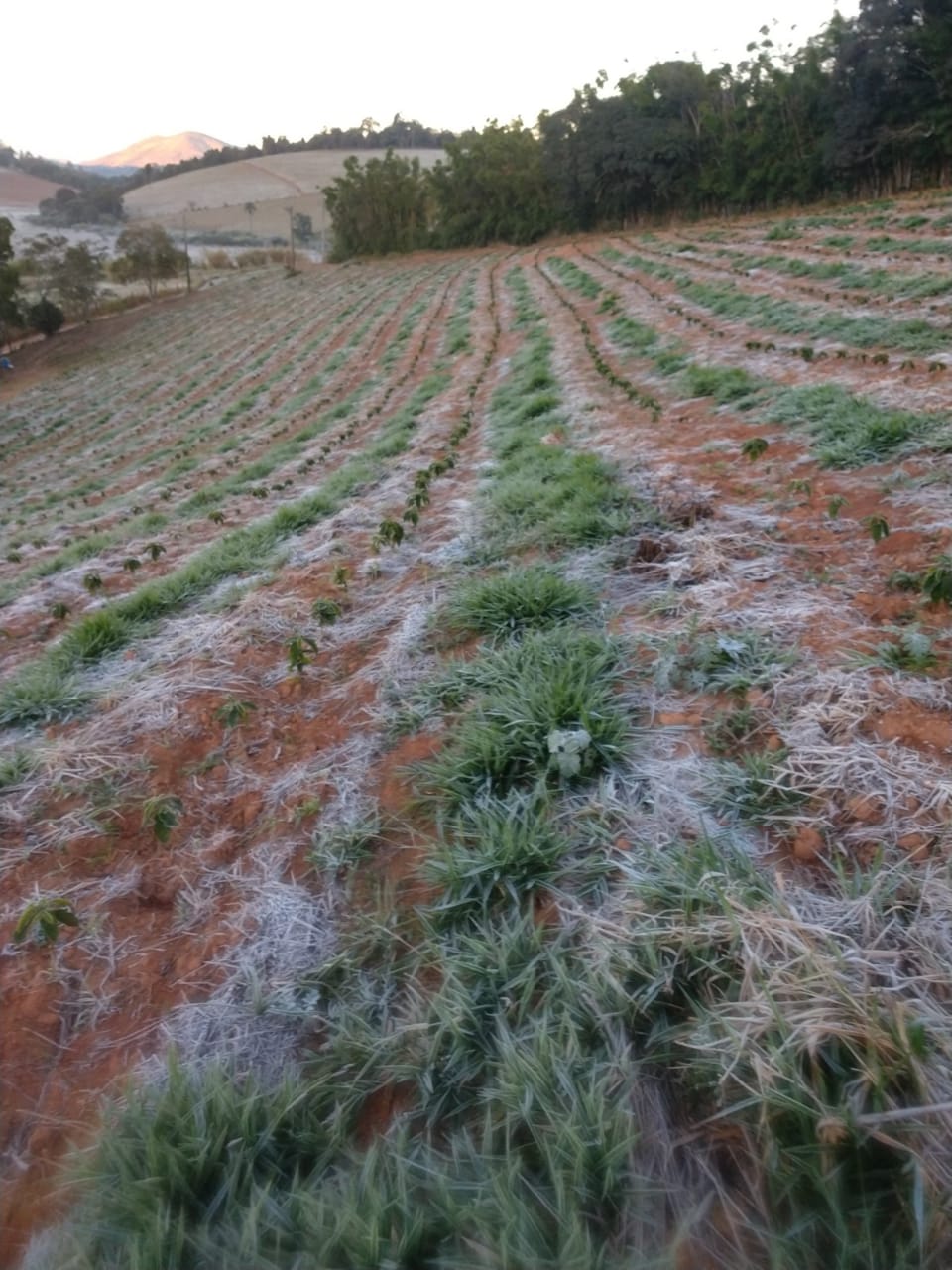
Rows of young coffee plants turned brown in the city of Bragança, São Paulo. Photo courtesy of Adriano Grasson.
The cold can cause the formation of microcrystals throughout the plant, but the leaves are the most exposed part of the plant and contain a significant amount of water, which means they end up freezing more easily.
The formation of ice and the contraction of protoplasm are the causes of irreversible damage to membranes and other cellular components, and thus prevent the normal reestablishment of the plant cell metabolism. This causes cell dehydration and cell disruption.
Consequences for the 2021 and 2022 harvests
Consequences for the 2021 harvest are almost zero, as in most coffee regions the seeds are already fully formed and rigid, so even if the fruit suffers damage, the chance of this seed being affected is minimal. Possible exceptions may occur in cases where there are immature fruits with high water content, but this is also not very representative of the totality of harvested areas in the country now.
The impacts of the 2022 harvest are what may be of most concern to players in the coffee chain. Agronomists begin to estimate how much coffee will be produced in the next harvest season based on conditions in the previous year. In this case, the end of the rainy season in March/April 2021, before the drop in temperatures, will affect plant production in 2022.
The vegetation and buds that will create flowers in 2021 and beans in 2022 are already present in the plant. In September, with the increase in temperature and the beginning of the rains, these buds will start to bloom or sprout.
The actual damage to the 2022 crop can only be evaluated for sure in August or September. As it starts to rain and temperatures go up, this will indicate whether the affected plants will start to sprout, whether reproductive buds will bloom, or not.
In the case of no recovery, farmers will prune their trees, creating a direct affect on the 2022 season. In the coming weeks, technicians from the national agricultural company CONAB will most likely make technical visits across the affected regions to begin damage assessment studies, with published data likely to follow in several months.
Jonas Ferraresso
Jonas Leme Ferraresso tiene un título en agronomía por la Universidad Estatal Paulista (UNESP). Ha trabajado como productor de café y agrónomo (Boa Esperança Coffee Farm), como tostador (Artesan Coffee Solutions) como catador y tostador (Amparo Rural Union) y como asesor. Él está situado en Serra Negra, São Paulo, Brasil.
Comment
3 Comments
Comments are closed.



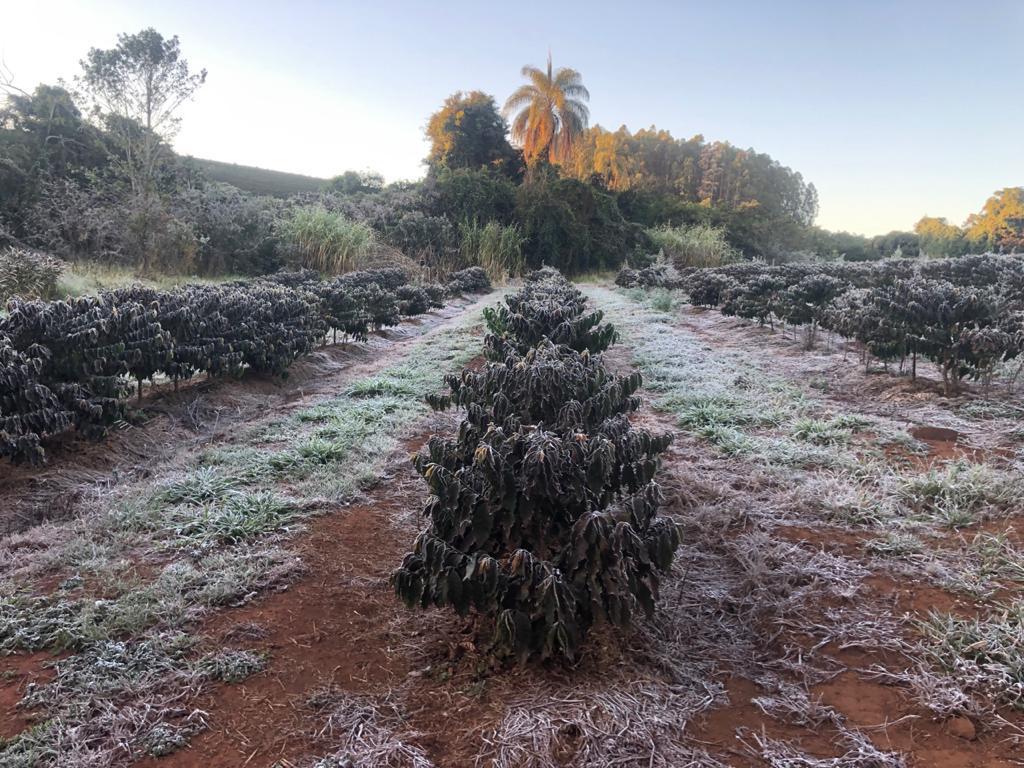



Frost forecast http://www.pronosticosheladas.com or twitter @AprilisServiceS
Isn’t it winter time? I don’t understand
What is the impact of frost on people’s welfare?